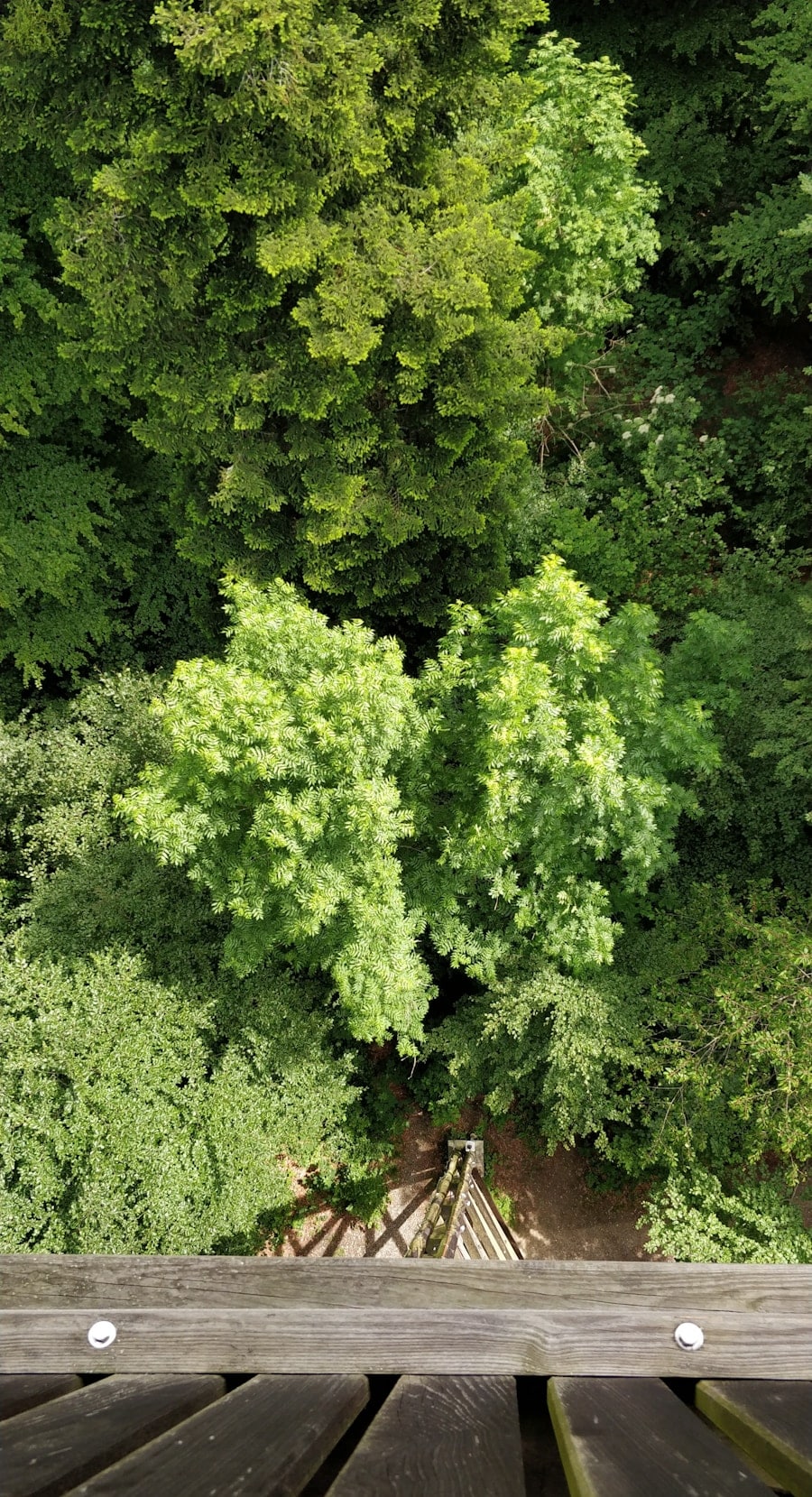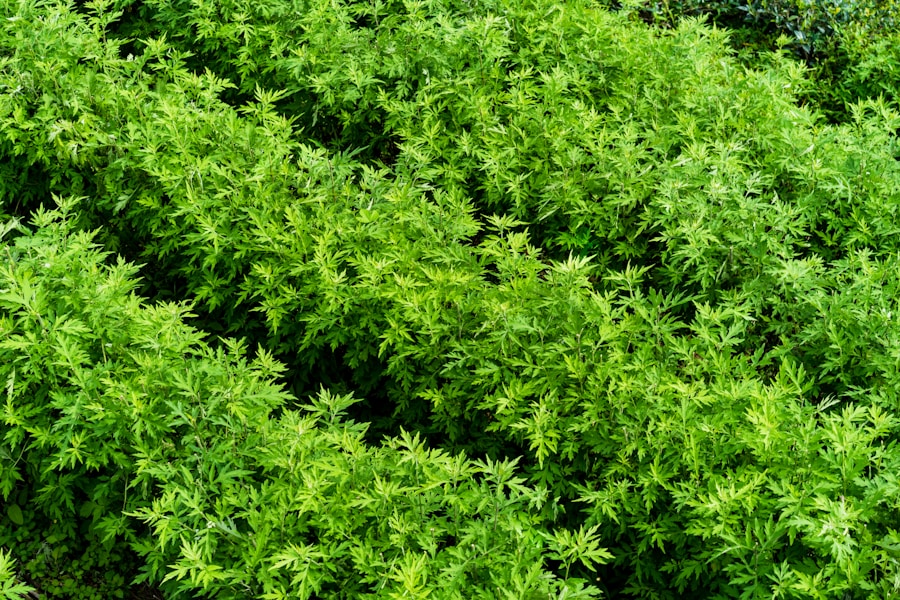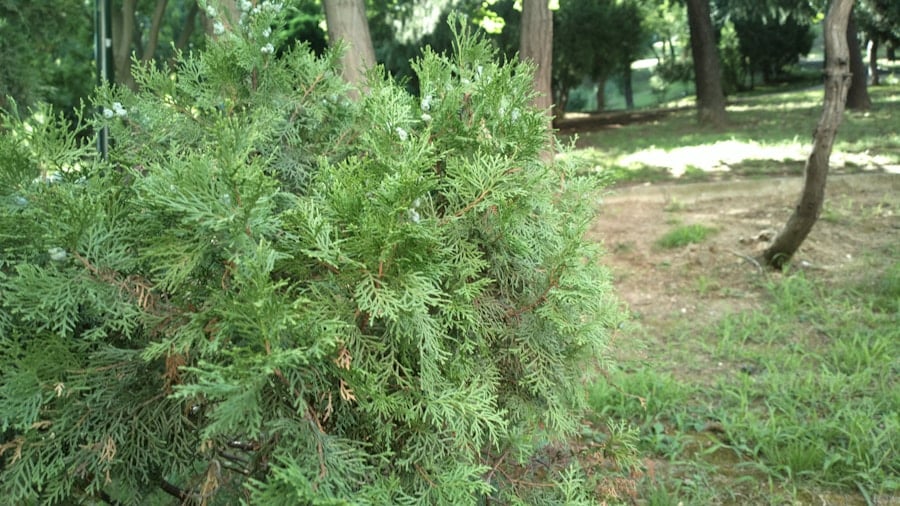Emerald Green Arborvitae (Thuja occidentalis ‘Smaragd’) is a popular evergreen shrub known for its narrow, conical shape and vibrant green foliage. This plant thrives in a variety of landscapes, serving as an excellent privacy screen or windbreak. To cultivate healthy and robust Emerald Green Arborvitae, it is essential to understand its specific needs, which include light, soil type, and moisture levels.
These trees prefer full sun to partial shade, ideally receiving at least six hours of direct sunlight each day. Insufficient light can lead to sparse growth and a lack of vibrancy in the foliage. Soil conditions play a crucial role in the health of Emerald Green Arborvitae.
They thrive in well-drained, loamy soils that are rich in organic matter. While they can tolerate a range of soil types, including sandy and clay soils, poor drainage can lead to root rot and other diseases. Therefore, it is vital to ensure that the planting site has adequate drainage.
Additionally, these trees prefer a slightly acidic to neutral pH level, ideally between 6.0 and 7.0. Regular soil testing can help determine the pH and nutrient levels, allowing for appropriate amendments to be made. Check out the latest fertilizers for your garden at Soil Compost.
Key Takeaways
- Emerald Green Arborvitae requires well-drained soil and full sun to thrive
- Choose a slow-release, balanced fertilizer specifically formulated for evergreen trees
- Organic fertilizers provide long-term benefits and improve soil health, while synthetic fertilizers offer quick results
- Apply fertilizer in early spring and late fall, and avoid over-fertilizing to prevent nutrient imbalances
- Consider supplementing with micronutrients like iron and magnesium to maintain healthy foliage and vibrant color
Choosing the Right Type of Fertilizer
Selecting the appropriate fertilizer for Emerald Green Arborvitae is critical for promoting healthy growth and maintaining vibrant foliage. Fertilizers are typically categorized into three main types: granular, liquid, and slow-release formulations. Granular fertilizers are often favored for their ease of application and long-lasting effects.
They can be spread around the base of the tree and will gradually release nutrients as they break down in the soil. Liquid fertilizers, on the other hand, provide a quick nutrient boost and are often used for immediate results, especially during the growing season. When choosing a fertilizer, it is essential to consider the N-P-K ratio, which represents the percentage of nitrogen (N), phosphorus (P), and potassium (K) in the product.
For Emerald Green Arborvitae, a balanced fertilizer with an N-P-K ratio of 10-10-10 or 14-14-14 is often recommended. Nitrogen promotes lush foliage growth, phosphorus supports root development, and potassium enhances overall plant health and disease resistance. Additionally, some fertilizers are specifically formulated for evergreens, containing micronutrients that can further benefit the health of these trees.
The debate between organic and synthetic fertilizers is ongoing among gardeners and horticulturists alike. Organic fertilizers are derived from natural sources such as compost, manure, or bone meal. They release nutrients slowly over time, improving soil structure and promoting beneficial microbial activity.
One significant advantage of organic fertilizers is their lower risk of causing nutrient burn, making them a safer option for sensitive plants like Emerald Green Arborvitae.
Conversely, synthetic fertilizers are chemically manufactured and often provide immediate nutrient availability to plants.
They can be highly concentrated, allowing for smaller application rates compared to organic options. However, synthetic fertilizers can pose risks if not applied correctly; they may lead to nutrient burn or leaching into groundwater if overused. Additionally, they do not improve soil structure or microbial activity in the same way that organic fertilizers do.
Ultimately, the choice between organic and synthetic fertilizers depends on individual gardening philosophies and specific plant needs.
Applying Fertilizer: Timing and Frequency

The timing and frequency of fertilizer application are crucial factors in ensuring that Emerald Green Arborvitae receive the nutrients they need for optimal growth. Generally, the best time to fertilize these trees is in early spring, just as new growth begins to emerge. This timing allows the plants to take full advantage of the nutrients during their active growing season.
A second application can be made in late summer if necessary, particularly if the trees show signs of nutrient deficiency. When applying fertilizer, it is essential to follow the manufacturer’s instructions regarding application rates and methods. Over-fertilization can lead to excessive growth that may weaken the plant’s structure or make it more susceptible to pests and diseases.
A good practice is to apply fertilizer evenly around the base of the tree while avoiding direct contact with the trunk to prevent potential damage. Watering after application helps to activate the fertilizer and ensures that nutrients penetrate the root zone effectively. For more information on fertilizer application for Emerald Green Arborvitae, you can visit the Arbor Day Foundation’s website.
Supplementing with Micronutrients
| Micronutrient | Recommended Daily Intake | Common Food Sources |
|---|---|---|
| Vitamin C | 90 mg for men, 75 mg for women | Citrus fruits, strawberries, bell peppers |
| Vitamin D | 600 IU for adults up to age 70 | Fatty fish, fortified dairy products, sunlight |
| Iron | 8 mg for men, 18 mg for women | Red meat, poultry, lentils, spinach |
| Zinc | 11 mg for men, 8 mg for women | Beef, shellfish, legumes, seeds |
While macronutrients like nitrogen, phosphorus, and potassium are vital for plant health, micronutrients also play an essential role in the overall well-being of Emerald Green Arborvitae. Micronutrients such as iron, manganese, zinc, and copper are required in smaller quantities but are equally important for various physiological processes within the plant. For instance, iron is crucial for chlorophyll production, which affects the tree’s color and overall vitality.
Deficiencies in micronutrients can manifest as yellowing leaves or stunted growth. To address these deficiencies, gardeners can use specialized micronutrient supplements or choose fertilizers that contain a balanced mix of both macronutrients and micronutrients. Soil testing can help identify specific deficiencies, allowing for targeted supplementation that meets the unique needs of Emerald Green Arborvitae.
Importance of Proper Watering and Drainage
Watering practices significantly influence the health of Emerald Green Arborvitae. These trees require consistent moisture but are sensitive to overwatering and poor drainage conditions. Establishing a deep watering routine encourages deep root growth while preventing surface roots from becoming too reliant on frequent shallow watering.
During dry spells or extreme heat, it may be necessary to increase watering frequency to ensure that the trees remain hydrated. Proper drainage is equally important; standing water around the roots can lead to root rot and other fungal diseases that can severely impact plant health. If planting in heavy clay soils or areas prone to waterlogging, consider amending the soil with organic matter or creating raised beds to improve drainage.
Additionally, mulching around the base of the tree can help retain moisture while preventing weeds that compete for nutrients.
Monitoring for Signs of Overfertilization

While fertilization is essential for healthy growth, it is equally important to monitor for signs of overfertilization in Emerald Green Arborvitae.
In severe cases, overfertilization can lead to root damage or even plant death.
To mitigate these risks, gardeners should adhere strictly to recommended application rates and timing guidelines provided by fertilizer manufacturers. If signs of overfertilization are observed, it may be necessary to flush the soil with water to help leach excess nutrients away from the root zone. In some cases, adjusting future fertilization practices based on observed plant responses may be necessary to maintain optimal health.
Other Tips for Maintaining Vibrant Emerald Green Arborvitae
In addition to proper fertilization practices, several other strategies can help maintain vibrant Emerald Green Arborvitae throughout their lifespan. Regular pruning is one such practice; it not only helps shape the tree but also encourages denser foliage growth by removing dead or diseased branches. Pruning should ideally be done in late winter or early spring before new growth begins.
Pest management is another critical aspect of maintaining healthy Arborvitae. Common pests include spider mites and bagworms, which can cause significant damage if left unchecked. Regular inspections can help identify infestations early on; introducing beneficial insects or using organic insecticidal soaps can effectively manage pest populations without harming beneficial organisms.
Finally, ensuring that Emerald Green Arborvitae are planted in suitable locations away from competing plants or structures will promote healthy growth and reduce stress on the trees. By considering all these factors—fertilization practices, watering techniques, pest management strategies—gardeners can cultivate thriving Emerald Green Arborvitae that enhance their landscapes with beauty and resilience.
If you are looking to enhance the beauty of your garden with vibrant greenery, consider planting emerald green arborvitae. These evergreen shrubs are a popular choice for landscaping due to their lush foliage and easy maintenance. To ensure your arborvitae thrives, it is essential to provide proper fertilization. For more information on fertilizing your emerald green arborvitae, check out this helpful article on fertilizing tips for trees.
FAQs
What is the best fertilizer for emerald green arborvitae?
The best fertilizer for emerald green arborvitae is a balanced, slow-release fertilizer with a ratio of 10-10-10 or 12-6-6. This will provide the necessary nutrients for healthy growth without causing excessive foliage growth.
When should I fertilize my emerald green arborvitae?
Fertilize your emerald green arborvitae in the early spring, before new growth begins. Avoid fertilizing in late summer or fall, as this can stimulate new growth that may not harden off before winter.
How often should I fertilize my emerald green arborvitae?
Fertilize your emerald green arborvitae once a year in the early spring. If the tree is showing signs of nutrient deficiency, a second application may be necessary in the late spring or early summer.
How much fertilizer should I use for my emerald green arborvitae?
Use a slow-release granular fertilizer and follow the manufacturer’s instructions for application rates. Typically, you will apply 1-2 pounds of fertilizer per 100 square feet of root zone area.
Are there any specific nutrients that emerald green arborvitae need?
Emerald green arborvitae benefit from a balanced fertilizer that contains nitrogen, phosphorus, and potassium, as well as micronutrients such as iron, magnesium, and manganese. These nutrients support healthy growth and overall plant health.

